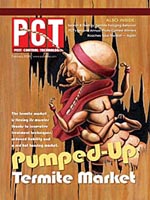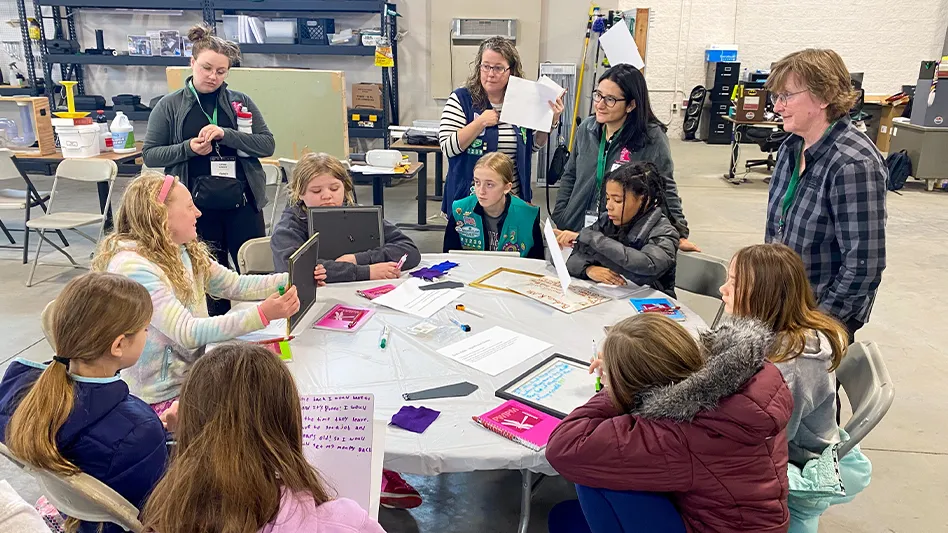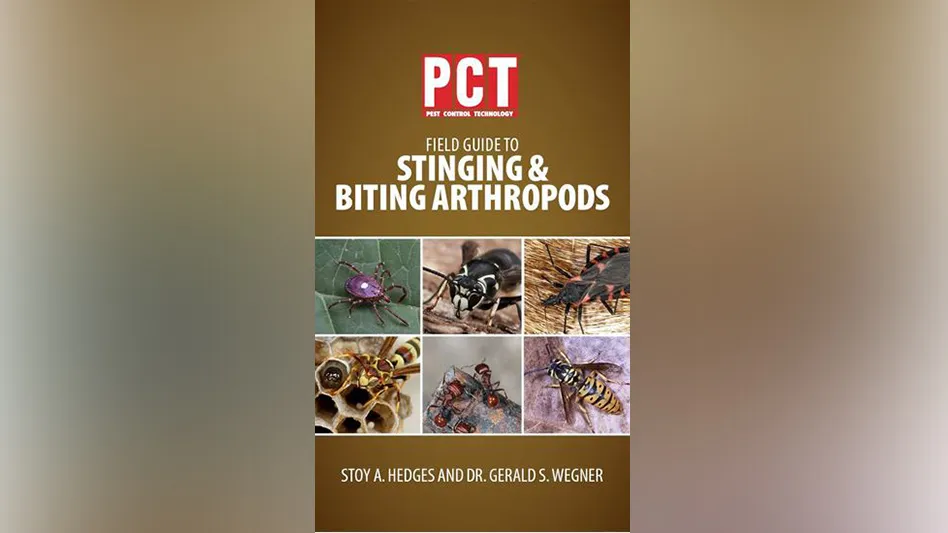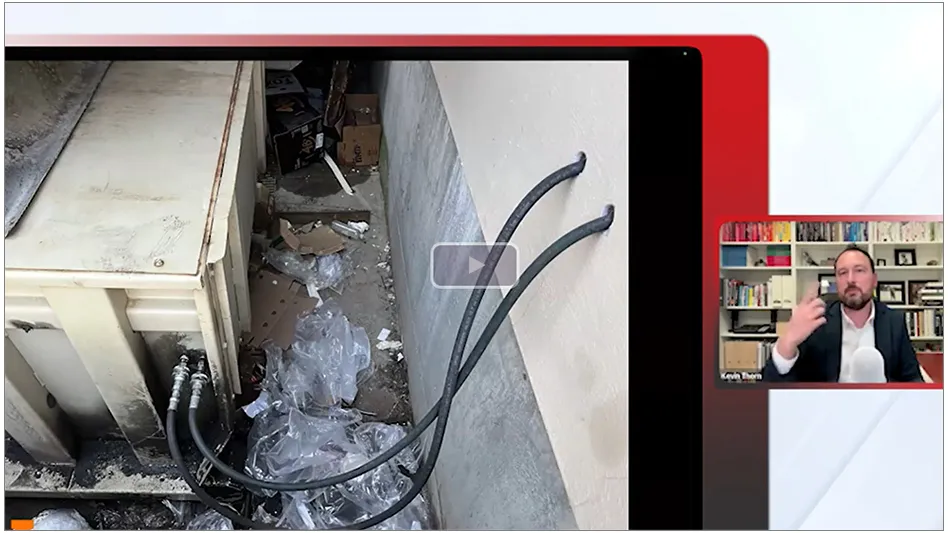Hundreds of thousands of rodent bait stations are currently installed in and around structures throughout the world. Generally it is assumed rodent bait stations are mostly boxes with holes that contain and protect the baits while at the same time help to minimize environmental threats from rodenticides.
However, are rodent bait stations merely black boxes with holes? Differences do exist in the design and materials (i.e., "architecture") used to construct the various stations on the market (e.g., plastic vs. metal, different locking mechanisms, high-profile vs. low-profile, etc.) Do the architectural differences affect how rodents use bait stations? And, if yes, what implications would such differences hold for practical on-the-job rodent control?
Both the biological factors (rodent and non-rodent animal interactions) and non-biological (servicing issues) associated with conventional exterior rodent baiting programs are certainly of interest to all pest management professionals. This article discusses possible biological issues associated with bait station architecture. The non-biological issues will be discussed in Part II of this article next month.
BACKGROUND. Even though exterior rodent baiting programs employing bait stations comprise a major component of pest control service to the public worldwide (and consequently serve as a major source of revenue in the pest control industry), surprisingly little research has addressed bait station design as it relates to rodent feeding behavior.
In 1987, Dale Kaukeinen evaluated Norway rat interactions with bait stations within controlled laboratory conditions. Kaukeinen posed several fascinating questions and challenges to station manufacturers. He stated: "Improvements in rodent utilization of bait stations might result from simple design modifications, (such as) the drilling of holes to increase bait odor to the outside, the use of attractants, or the development of a regime of ‘weathering’ to establish rodent odor marking." Kaukeinen called for additional experiments within field ("real world") conditions.
In 1988, Karl Morris and Kaukeinen conducted a laboratory study with wild-captured, but laboratory-acclimated, house mice and their feeding activities from within six different mouse-size tamper-resistant bait stations under laboratory conditions. They discovered mice investigated each of the stations without preference for one station type over another.
ARCHITECTURAL DETAILS. In the professional pest management industry today, many different models of exterior bait stations are available from manufacturers. Bell Laboratories, JT Eaton, Liphatech and Syngenta Professional Products are among the largest of the manufacturers, but several other manufacturers offer some unique bait stations as well.
For some of the exterior rodent bait stations, the general architecture is somewhat similar, while for others, the differences are obvious. For example, several models among different brands are designed with low, flat lids, while one of the most popular models contains a high arched lid. Examples of these differences and the terminology associated with bait station components are illustrated in Figures 1 (on this page) and 2 (on page 82).
So, how much does bait station architecture affect animal behavior inside the stations? Obviously, if a station’s design would cause a rodent to be lured into the station, or spend more time in the station, then you might expect the chances of the rodent consuming a lethal dose of bait or interacting with enclosed traps to be greater. Although the complexity of rodent foraging behaviors prevents us from completely answering this question, some interesting hypothesis can be presented here.
If you study the architecture between the two bait stations as shown in Figures 1 (previous page) and 2 (this page), the differences are striking. The station on the right is designed with a high ceiling lid, a shallow (3.0 mm) lid-lip, an 8.0 mm step-over entry lip leading through a circular portal. Inside, a relatively narrow aisle (4.0 cm) leads to parallel bait "wells" containing 3.5 cm well walls.
The station on the left, in contrast, is designed with a low, flat ceiling, a large (13.0 mm) overlapping lid-lip, an absence of any entryway step-over, an 8.0 mm recessed archway-shaped portal. Inside this station is a relatively wide aisle (8.0 cm) leading into an open area, which instead of baiting wells, leads into "bait rooms" with walls ranging from 7-8 cm in height. In this station, the option exists for the bait to be installed outside of the "bait rooms" in the "front" of the station as shown in Figure 2 on this page.
Some interesting questions can be raised relative to bait station architectural differences and rodent behavior.
1. Does the recessed floor entry portal in a station minimize any initial entrance-hesitation behavior by rodents? With such a recessed entryway, the head of the rodent is partially or completely inside the entry portal before the rodent shifts its feet from the natural ground substrate to the plastic substrate of the station.
2. Do rodents exhibit any hesitancy or aversion to stepping over front-entry lips in stations? (Although consider that the mice already negotiate a much higher "step-up" when they climb 3-cm patio stones to enter the stations.)
3. Do stations with low ceilings and larger overlapping lid lips provide differences in the physics involved in the channeling of volatilizing food odors from the enclosed rodent baits? It is possible such architecture contributes towards channeling food odors out at lower levels than the architecture of high ceilings, bait wells, small lid overlaps and narrower aisle ways. And if there is an effect, foraging mice upon initial approach may detect more food odors emanating from one station design than another.
And if this is true, then conceivably, where the bait blocks are positioned within a station (i.e., outside or inside the "bait rooms," the front or back positions within the baiting wells or a vertical vs. horizontal securement) may all affect consequent rodent entry and rodent feeding.
4. Do the stations with low ceilings and larger overlapping lid lips provide greater deadening vibrations and sounds from outside the stations? If so, this result may create more "cave or burrow-like" environments (i.e., the natural protective environments) to a small rodent. Perhaps quieter environments allow small prey species (mice, rats) to sense greater protection from predator enemies.
These questions are important on a practical level. If one style of architecture does cause rodents to either investigate a station more, or spend more time within a particularly designed station, then in addition to perhaps increased feeding on baits, visiting rodents are more likely to "mark" such stations with body secretions, droppings and urine. More droppings result in more "natural weathering" to the stations. Pheromones present within the droppings (as well as within the urine) could play a significant role in causing a cycle of greater entry and activity (i.e., more feces = more attraction; more attraction = more feces, etc.).
The rodent behavioral aspects of initial approach to a "feeding box" and/or the physics involved in bait volatilization raises many questions involving rodent foraging behavior, air currents, heat dissipation, food odor channeling, and probably other unknown factors. Also, all of this may be heavily influenced by daily climatic factors.
The possible role of plastics used in the construction of the stations being repellent to varying degrees to visiting animals also cannot be ruled out. In Kaukeinen’s study, he commented "besides design construction, there were some indications that some plastics may have repellent properties, as may some metal station surfaces."
We hypothesize however, that if any repellent factors exist from the plastics, they are diminished, if not neutralized, after the initial few days or weeks due to dust, dirt, blown debris, pheromonal markings, urine, feces and possibly other ambient factors.
At RMC Pest Management Consulting, studies within real-world situations of exterior rodent baiting are currently ongoing, and data is being collected to address these important questions.
MULTIFUNCTIONAL ARCHITECTURE. Over the past several years, both bait stations and some rodent traps have been designed to offer multi-functional capabilities. This approach was mostly implemented by a few multiple catch rodent trap manufacturers that attempted to also offer insect baiting and/or insect monitoring options. Now, several companies are pursuing the multi-functional station approach (Woodstream, Rockwell Labs, Liphatech, Whitmire Micro-Gen, etc.).
The Syngenta Multiplex station (as its trade name implies), is designed for several functions in the field. However, it is likely it will be employed in most cases for both rodent and ant baiting. In our field trails, pavement ants did in fact aggressively enter this station and feed on the baits inside (Figure 3). The interesting point is the ants did not enter via the station’s "structural guidelines" built into the side of the station, rather they entered directly through the main openings — the same openings the rodents use.
The reasons the ants were so attracted to the Multiplex station are thus far unknown. However it may be for the same reasons as hypothesized for rodent foraging. Perhaps, due to the station’s design, there are specific air currents carrying food molecules out of the Multiplex station. Possibly the ants’ antennae receive more stimulation due to the lack of a "step-over lip" in the Multiplex. Research on ant foraging behavior indicates that ants employ their antennae in swinging and other motions to contact and navigate to various odor molecules in the air (e.g., pheromones, plant odors). Maybe the ants are detecting volatilizing grain molecules escaping from the Multiplex’s entry portal flow along the floor level and are not directed upward over the ant’s antennae due to the entry lip.
Bait stations that can provide insect baiting options, we think, offer efficient rodent and ant management programs — especially around large commercial establishments. Pavement ant colonies foraging around the exterior perimeter walls of food-handling establishments often also forage on the inside of these facilities. Thus, stations attractive (or non-repellent) to pavement ants can be an ideal place to deliver ant baits or liquid residual insecticides.
Whichever factors are at play, more research is needed on ant behavior in and around bait stations. Architectural features that encourage ant feeding inside rodent bait stations have significant ramifications for the design and materials of not just rodent bait stations, but more importantly, for ant bait stations specifically.
SUMMARY. Based on our work last summer and preliminary results, we are of the opinion that bait station architecture may in fact be quite significant in affecting how rodents, ants, and perhaps other animals investigate and interact with what at first glance appears to be merely boxes with holes that hold bait.
It may be entirely possible that even the most subtle factors of station architecture can increase or decrease what we are attempting to do with bait stations; that is, not discourage the rodents from entering the stations and once inside, to maximize their chances of interacting with any enclosed baits or traps. If we can also do this for insect pests species at the same time, well, that’s a bonus in program efficiency.
Authors’ Acknowledgements
Many thanks to Mr. Steve Caplinger, and to the professionals at Terminix International, Middletown, Ohio, for allowing us to conduct field trials at one of their commercial food plants.
Bobby Corrigan and Dan Collins work at RMC Pest Management Consulting, Richmond, Ind. Corrigan can be reached at rcorrigan@pctonline.com.

Explore the February 2004 Issue
Check out more from this issue and find you next story to read.
Latest from Pest Control Technology
- UF Researchers Examine How Much Bait it Takes to Eliminate a Subterranean Termite Colony
- Women in Pest Control Group Continues to Grow, Provide Opportunities in the Industry
- NPMA Announces Results of 2024-2025 Board of Directors Election
- Massey Services Acquires Orange Environmental Services
- Hawx Pest Control Wins Bronze Stevie Award for Sustainability
- Abell Pest Control Highlights Growing Tick Activity Across Canada
- Syngenta's Chris Keefer Reviews Ant Control Strategies, Products in Latest Market Report
- PCOC Announces Keynote Speaker and HR Panel for Best Pest Expo in Tahoe





